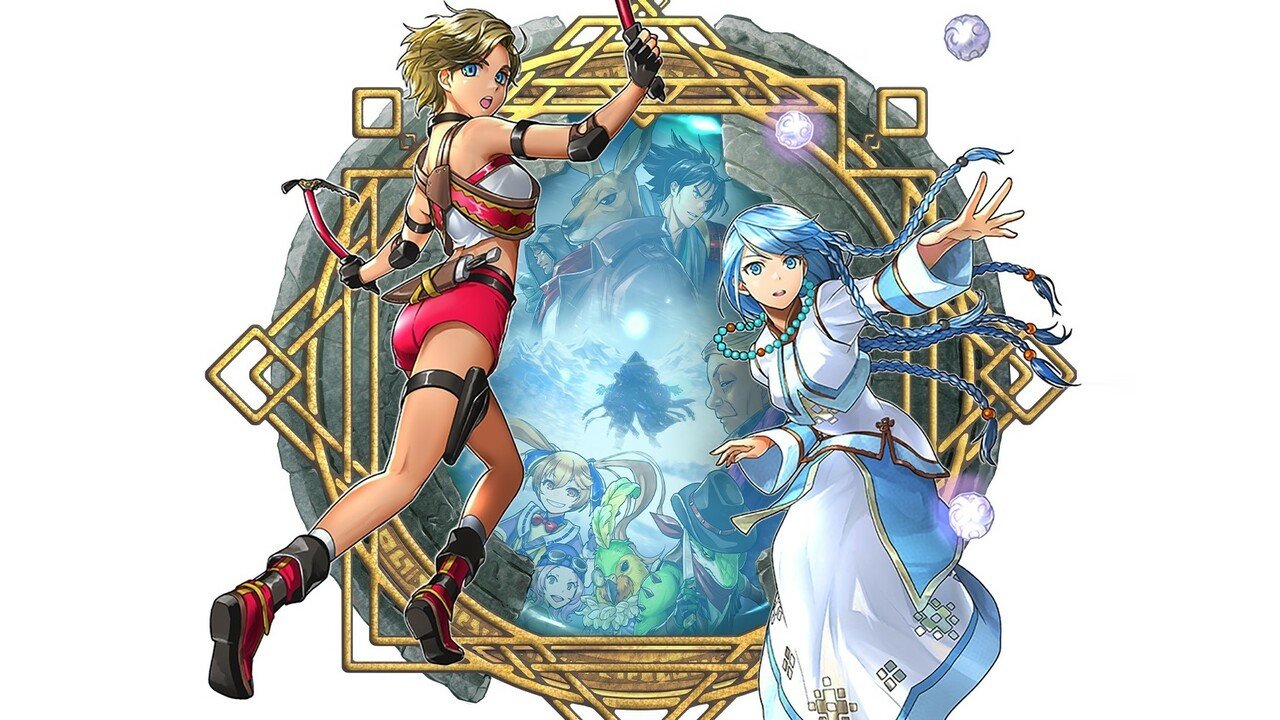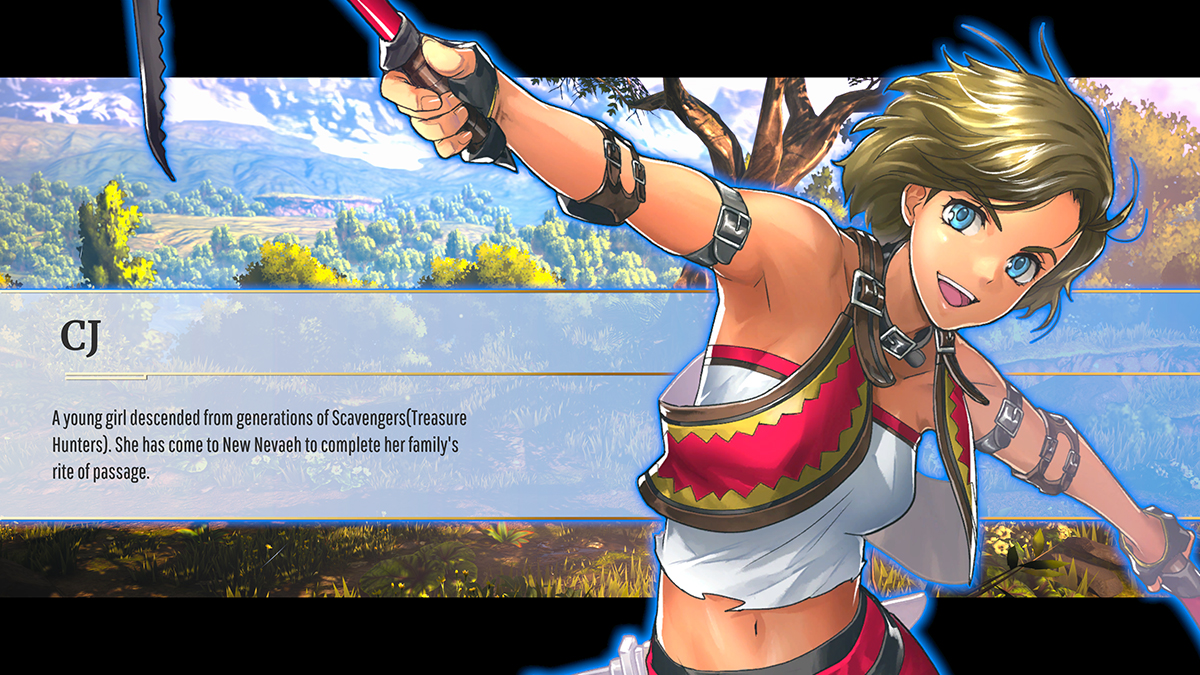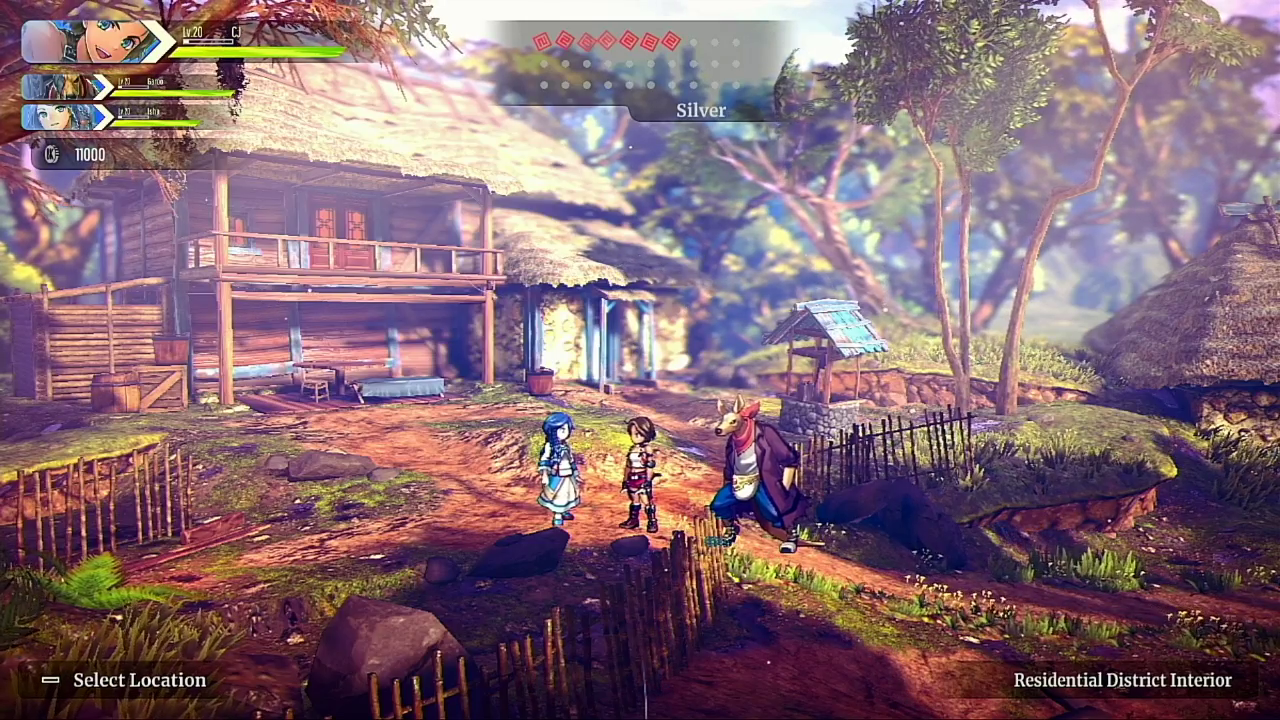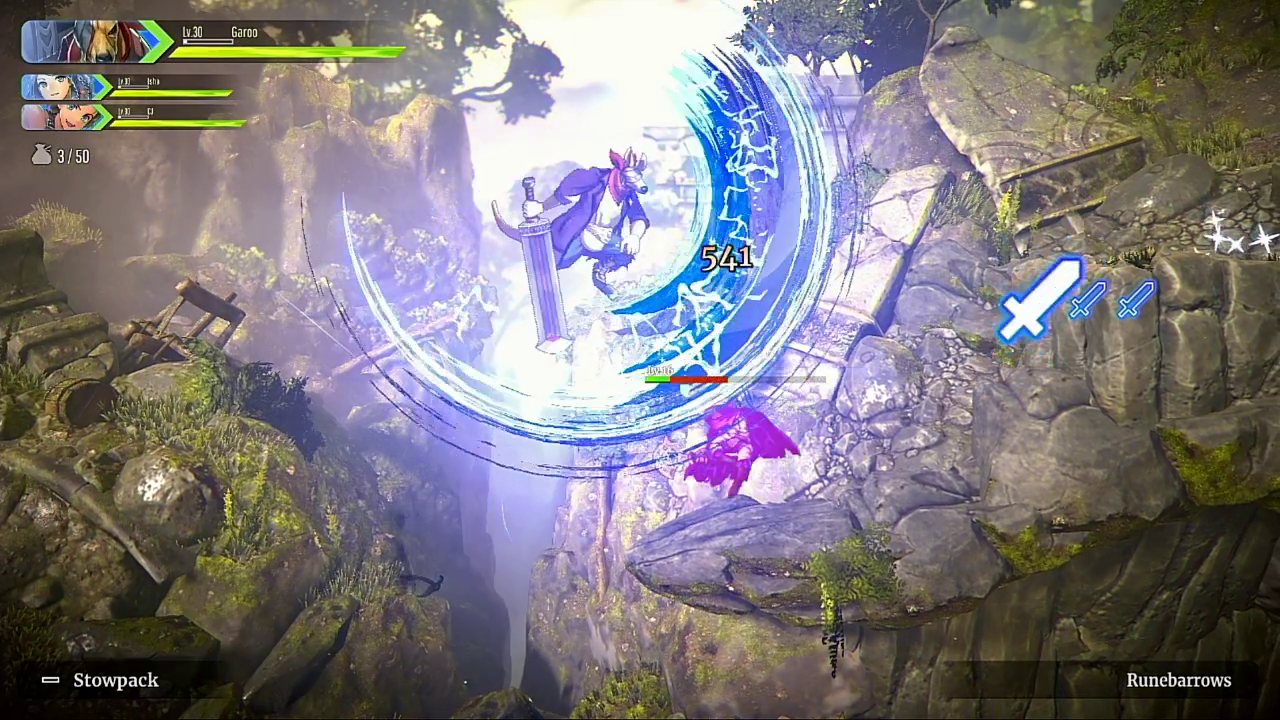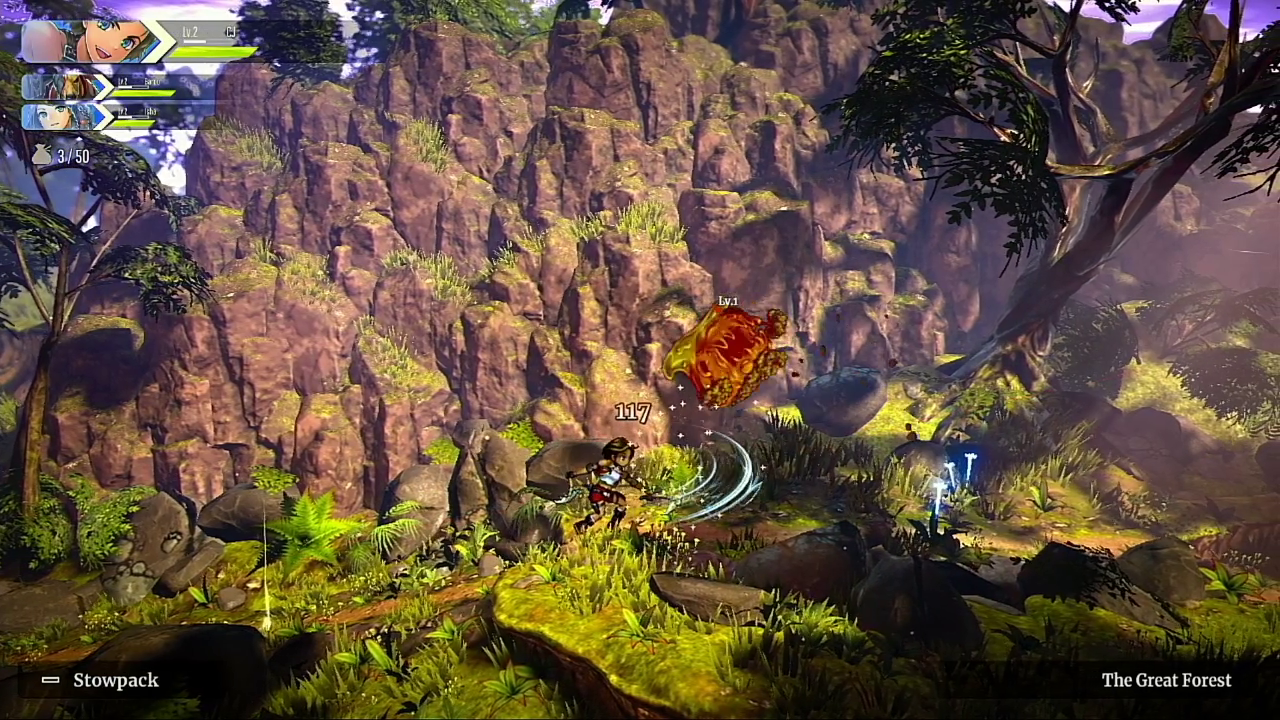A New Naveah state of mind.
If Eiyuden Chronicle: Rising proves anything, it’s that there’s something to be said for spunk. This action adventure game from 505 Games serves as a precursor to the forthcoming, Kickstarter-funded Eiyuden Chronicle: Hundred Heroes. Although little like the game it’s setting up, Rising manages to stand pretty well on its own (provided you’re willing to be patient with it).
When it’s released in 2023, Eiyuden Chronicle: Hundred Heroes will provide turn-based JRPG gameplay typical of the Suikoden franchise from developers Yoshitaka Murayama (Suikoden I and II), and Junko Kawano (Suikoden I and IV). Eiyuden Chronicle: Rising is not that. This is a 2D action platformer with some town-building elements that introduces you to the Hundred Heroes lore and some of its characters, but otherwise does its own thing.
That thing mostly centers around CJ, a young treasure hunter out to make a name for herself and get rich in the process. Her motivations do dig a bit deeper than that, we come to learn, but it’s her personality that engages the player. She’s a fun, perky character who manages to be a go-getter without being annoying—a writing trick many game developers haven’t mastered.
CJ is quickly joined by Garoo—a seasoned treasure-hunting kangaroo (Suikoden fans know to expect plenty of anthropomorphic characters)—and, eventually, Isha. The latter is the mayor of New Naveah, having been thrust into the role after the actual mayor, her father, disappears. Their adventures center around the Runebarrows—a catacomb of ruins unearthed beneath New Naveah after a massive earthquake. The promise of riches buried in the Runebarrows draws many treasure-hunters to the town, so Isha capitalizes on that to restore New Haveah’s economy.
Isha’s system may be good for the town, but it may not be for the gamer. In order to access the Runebarrows, explorers either have to pay an exorbitant fee or complete quests acquired from the townsfolk; I’ll let you guess which route the player is forced to take. Completing quests earns CJ stamps, which she needs to gather to progress. Fine, except many of these quests are quite boring. They’re sometimes as goofy as running one screen over to tell an NPC a product is finished. Often, the fetch quests are fulfilled before they’re even assigned. If only real life could work that way now and again.
This wouldn’t be a problem except there are a lot of quests to complete; once you’ve filled up your stamp card, you’re given a bigger one. I suppose you could skip some of these quests, but considering the rewards for completing them (better materials, weapon/armor upgrades, new options at the shops), you’d be crazy to do so. As a result, you’re going to spend a lot of time in Eiyuden Chronicle: Rising just running around in circles.
That’s unfortunate because the actual explorative gameplay is pretty tight. The controls are simple and very responsive, with each character getting a standard attack, special ability, and special move. CJ, for example, attacks with Y. Hitting ZR causes her to dart forward or backward to avoid enemies. Double tapping the jump button (B) allows her to double jump. Garoo, on the other hand, is much slower than CJ, but more powerful. He has no double jump, but hitting ZL allows him to temporarily block attacks, and holding X down gives him a more powerful strike.
These abilities evolve as the game progresses, but the default attack is the main trick. Although you eventually have access to three playable characters, you control one at a time, calling them up using their attack button. This makes character swapping straightforward, as their main attack is also the button you use to switch over to them. Chaining attacks is very easy and provides some clever mechanics for boss battles. One initially troublesome early boss was quickly overcome once I realized I could stun it by using Garoo to reflect its attacks and then switching to CJ to quickly reach and damage the monster. Putting this all together against the late bosses was tremendous fun.
Even when exploring, however, there is quite a bit of repetition. You’ll need to return to each environment numerous times to fulfill the requirements needed to advance, so the scenery will get old. Worse, stumbling upon previously beaten bosses requires you to beat them again. You may think leveling up would ease this process, but the bosses often get new tricks, too. The result is that exploration can become a chore when you already have that stamp card to fill.
Combat, thankfully, is responsive and crisp. It helps that the environments in which you’re fighting are quite lovely. The Runebarrows and other locations are lively and colorful, making them a joy to explore (at least initially).
The game requires a lot of back and forth, but the developers made it very easy to zip between locations after you’ve unlocked them. There are also numerous save points to aid in your adventures. You’ll need them not only to replenish health, but also to clear out your satchel. Unfortunately, you can only carry so many items at once, so you’ll often need to retreat outside a “dungeon” to empty your bag. Having done so, you can zip straight back to your last save marker.
Unfortunately, right when you start to master the complex chain attacks and dodges required to beat the tougher bosses, the game ends. The whole thing can be completed in around 15 hours. That’s fair for $15, but the game is too heavily loaded with the basic stuff. If the developers had spent just the first quarter holding our hand and more quickly sent us out on our own, Eiyuden Chronicle: Rising would’ve provided a more satisfying experience. Instead, we’re left at the end thinking, “Wait, I was just getting into this!”
For what it is, though, and for what it costs, Eiyuden Chronicle: Rising is a fun, perky game that comes off like a lite version of Sakuna: Of Rice and Ruin—more focus on the ruin, less on the rice. I’m not sure this was the right way to set up Eiyuden Chronicle: Hundred Heroes, but I had fun with Rising nonetheless.
Review: Eiyuden Chronicle: Rising (Nintendo Switch)
Good
The action adventure game Eiyuden Chronicle: Rising manages to carve out its own identity while serving as an introduction to the lore of the forthcoming Eiyuden Chronicle: Hundred Heroes JRPG. Basic combat, tedious fetch-quests and linear town-building may put off those seeking a solid challenge, but the game’s sprightly action, jovial spirit, and spunky characters will carry casual platformer fans through its relatively short play time.

